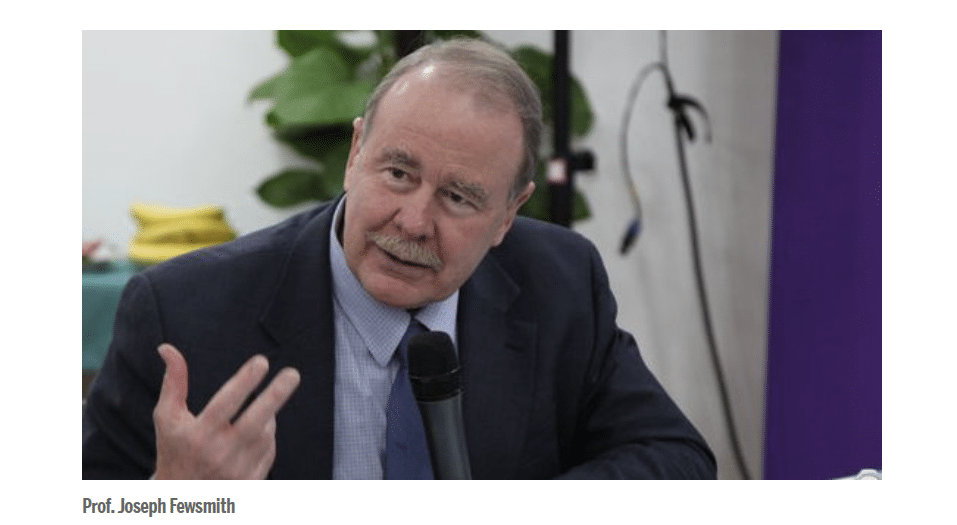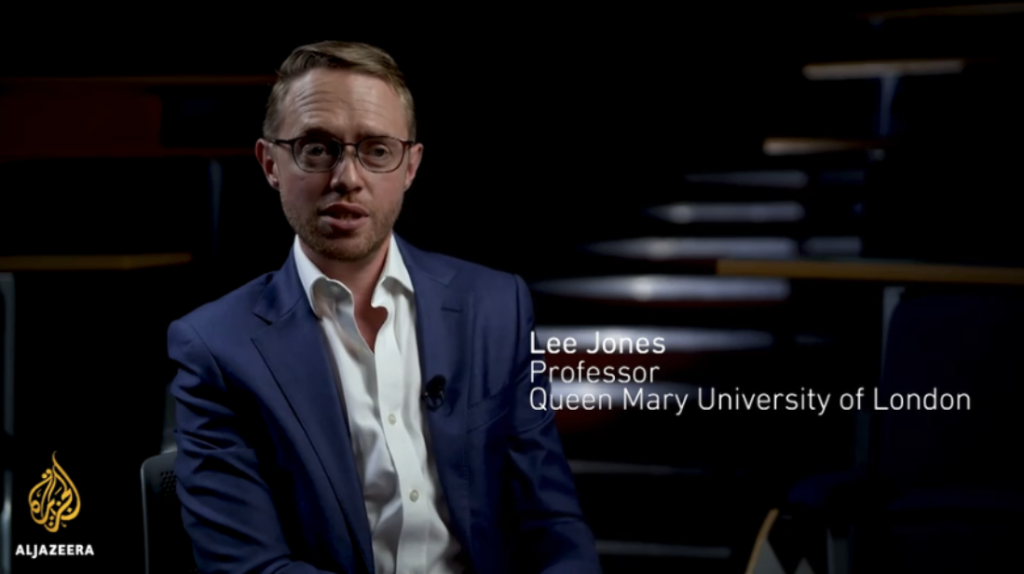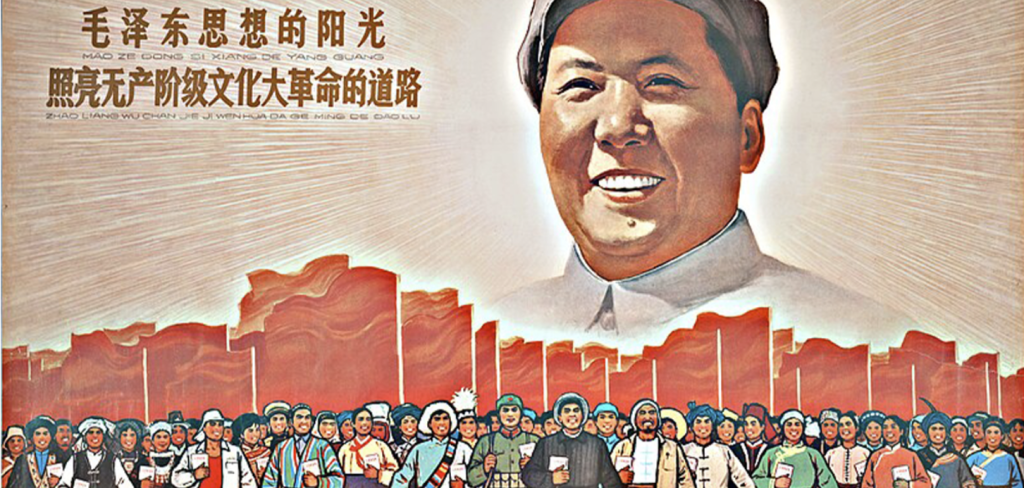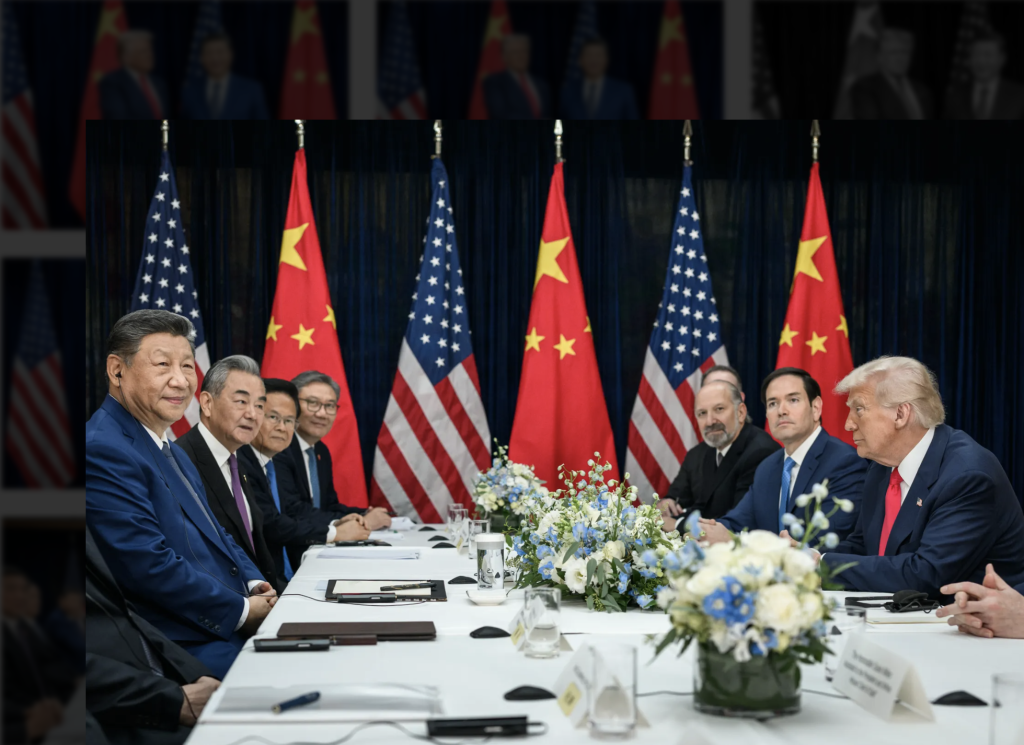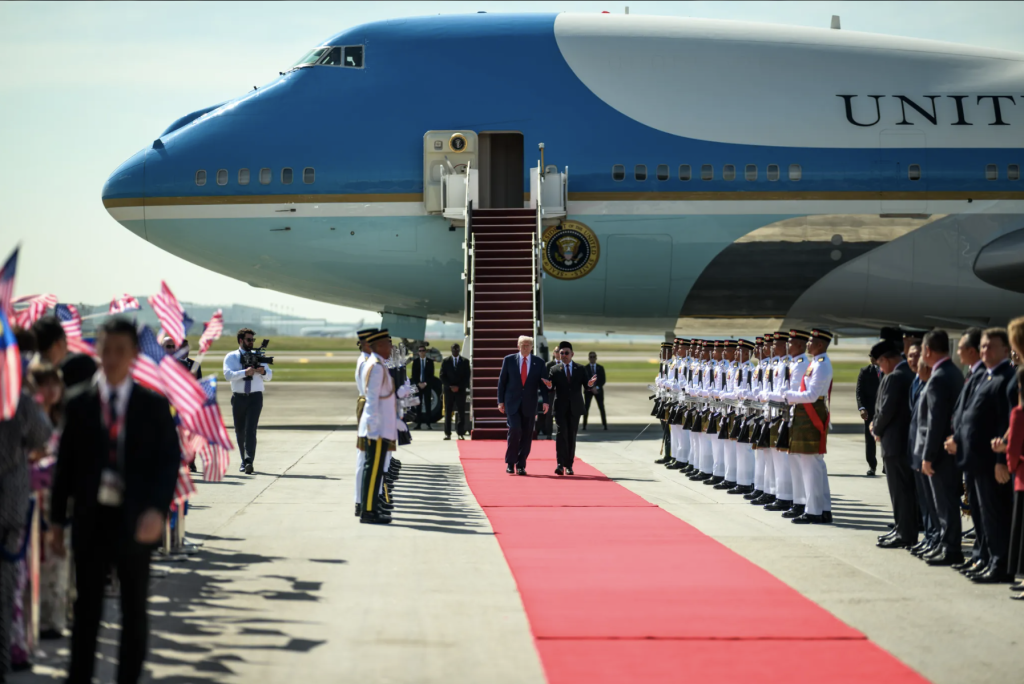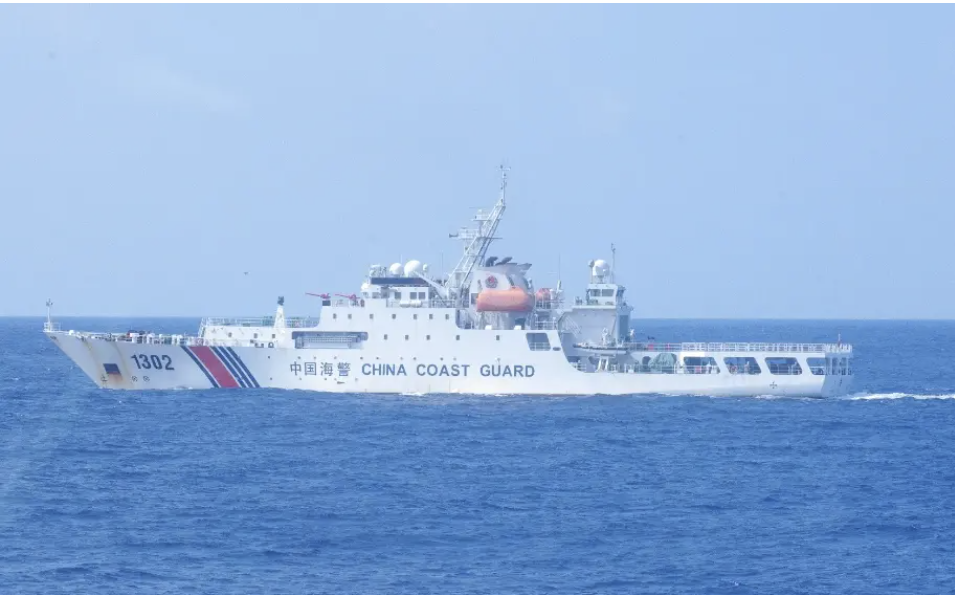Remembering Joseph Fewsmith: The Passing of a Generation of China Hands
Historical Perspectives: Michael Szonyi on US-China Relations
Yuxuan Chen and Tang Jie, two student journalists at US-China Perception Monitor, recently had a Zoom interview with Professor Michael Szonyi of Harvard University. They discussed the core mission of the Fairbank Center, the US-China relations from historical lenses and other related issues.
From the Fairbank Center for Chinese Studies: Michael Szonyi is Director of the Fairbank Center for Chinese Studies and Frank Wen-hsiung Wu Memorial Professor of Chinese History at Harvard University. He is a social historian of late imperial and modern China who studies local society in southeast China using a combination of traditional textual sources and ethnographic-style fieldwork. He has written, translated or edited seven books, including The Art of Being Governed: Everyday Politics in Late Imperial China (2017); A Companion to Chinese History (2017), Cold War Island: Quemoy on the Front Line (2008; Chinese edition 2016) and Practicing Kinship (2002). He is also co-editor, with Jennifer Rudolph, of The China Questions: Critical Insights on a Rising Power (2018).
USCNPM: What is the core mission of the Fairbank Center? Do you think this core mission will be challenged or changed in an era where US-China relations are at their lowest point?
Szonyi: The core mission of the Fairbank Center has remained the same for its entire 60+ years of history. It is to advance the study of greater China at Harvard, in the United States and more broadly. I don’t think this core mission is going to change but it will indeed be challenged.
The reality is that, though the mission of the Fairbank Center has been consistent, the Center has had to adapt multiple times to changing times, and has gone through a number of different incarnations. The Fairbank Center, at that time known as the Center for East Asian Research, was founded in a Cold War context with the idea of using multidisciplinary perspectives, particularly social science perspectives, to explore contemporary China. The question of why China’s political development had moved in ways that people in the United States were unhappy about was a central concern. I often joke with Chinese audiences that one of the main implicit goals of the Fairbank Center in its early years was to study how China had been liberated in order to ensure no other places became liberated. What I mean is that part of the project of the Center was to better understand the rise of the Chinese Communist Party (CCP), so that the spread of communism around the world could be prevented. Obviously, I tell this story because we have moved very far beyond our Cold War origins. But it also means that this is not the first time that scholars at the Fairbank Center have confronted delicate difficult and poor US-China relations.
The deterioration in the US-China relationship over the last couple of years makes our work more difficult, more liable to attract suspicion and less popular. But the core mission to enhance the understanding of China in the US scholarly community and in the US at large is unwavering.
Our commitment to cooperation with our colleagues in China is also unwavering. Although that commitment too has been very much challenged by the pandemic and the current bilateral relationship, we are absolutely committed to it. We continue to work closely with Chinese students and colleagues and I cannot foresee a future where that would change.
USCNPM: In The China Questions: Critical Insights into a Rising Power (2018), you mentioned that Americans have an understanding deficit of China. Similarly, some scholars would argue that Chinese misunderstand the US too. How can both sides reduce misunderstanding and misinformation about one another?
Szonyi: The first answer is obvious: they can buy and read our book, and the many other important books about China by my colleagues. The issue is not about the absolute quantitative amount of knowledge that one has about the other society. It lies in recognizing the complexity of both societies and of learning to be suspicious of generalizations that try to reduce that complexity to a monochrome image. The reality is that in any country as large as China or the US, you can find evidence to support diametrically opposed interpretations.
The second part of my answer is to recognize that many statements about China or the US are politicized. When you hear a generalization about another society, you probably should always ask what political agenda lies behind that generalization.
Furthermore, one can try to recognize that one’s own attitude towards the other society may also be, and indeed should be, complex and nuanced. For example, I can greatly value my relationship with my Chinese friends and colleagues, and I can even respect the CCP’s accomplishments over the last 70 years, while still being deeply critical of certain policies and practices of the PRC-CCP.
For policymakers specifically, this is really important because it means recognizing that there is never going to be a one-size-fits-all policy. The appropriate China policy has to be nuanced, just as our relationship with China is nuanced. Whether you think China is a competitor or rival to the US, it does not mean that they will be an adversary in every dimension. Treating the other party as an adversary in every dimension is almost sure to be a self-defeating policy, that will produce the very same adversarial relationship it is meant to address. This is equally true of the US, of course.
Greater understanding is not necessarily going to mean harmony between the two societies. That’s an unrealistically optimistic view of the world. But even if the US and China are probably not going to get along as friends in the coming century, we still need to understand each other better if we are to promote a smoother relationship. Here I want to make specific reference to a couple of recent developments in the US that will not contribute to reducing misunderstanding but in fact the exact opposite: the closing of the Fulbright program which sends graduate students to China and the trend towards the closure of Confucius Institutes on US campuses. I happen to think that the closure of Confucius Institutes on university campuses is a good thing. However, the sensible thing would be match the reduction in funding through CIs with an increase in domestic funding for the study of China, so that the net effect is not to reduce the number of American students learning about China.
Basically, the simple question is, do we want to know less about China or more. To me, it’s straightforward that even if we are deteriorating into a more hostile relationship, surely we want to know more. Similarly, we want Chinese people to know more about the US. That’s why the flip side of the two issues I just mentioned, which is policies making it harder for Chinese students to come to the United States, is unwise. The concerns about espionage in some STEM fields may have some foundations, but the vast majority of Chinese students in the US are of absolute good to the bilateral relationship. The solution is to come up with policies to address national security concerns, not to put up barriers to discourage educational exchange.
USCNPM: Many people argue that China is strengthening its global influence politically, economically, and culturally through expanding programs such as the One Belt One Road. All these programs have the goal of exporting Chinese values and gaining commercial exchanges, how do you compare the Ming treasure voyages to these initiatives in a historical context?
Szonyi: As a historian, I have to point out that the expansion of Chinese influence globally but especially regionally is in many ways simply a return to historical norms. For all recorded history, China has had considerable political, economical and cultural influence throughout the East Asian region and beyond. For most of human history, China has been responsible for about 40 percent of global GDP and after a relative decline over the past two hundred years or so, it is on track to return to this historical norm in the near future.
Turning to your specific question, I don’t think we really know conclusively what the Belt and Road initiative is and what it means. China insists that it is not about exporting Chinese values; many Americans disagree. At some level both arguments are equivalent in the sense that you can find evidence to show that the initiative is a Chinese conspiracy to dominate the world and you can also find evidence that says it is a selfless contribution to the global community. We don’t actually know the scope and scale of the program, which limits our capacity to make conclusive judgments about this.
What I am most interested in, and where I think I can contribute to the conversation, is to look at the narratives that are deployed to legitimize the Belt and Road initiative.
Zheng He and the Ming treasure voyages are main characters in a mythology that is being constructed in support of the Belt and Road. The basic argument that is being made is that Chinese expansion in the fifteenth century was different from European colonialism. Zheng He’s missions demonstrate that China went abroad in peace, instead of in order to conquer, subjugate, and colonize. While it is true that Ming did not colonize the places to which Zheng He voyaged, this is still a historically inaccurate argument, at least to some degree. The largest voyage included 27,000 soldiers. It it is hard to see why a peaceful journey would need so many soldiers. On three of the journeys, Zheng He’s forces engaged in combat with other countries and actually overthrew the local rulers in one case. An alternative, and I would say more historically accurate, way of looking at the voyages is to see them as a form of Chinese power projection and an attempt to enforce a China dominated international order in Southeast Asia five hundred years ago.
The important point is to see that the exact same historical narratives can be interpreted in extremely different ways. They can be used to either justify a policy or actually challenge a policy. We learn something just be recognizing this point. Using the Zheng He voyages as an analogy for current Chinese efforts to expand their influence culturally, politically and economically can be seen as indicating that Chinese are not expansionist or hegemonic but they can also be seen as a stance of bullying. When we take this analogy apart, it can actually be quite unsettling. I am quite keen on the idea of rethinking analogies in this way when I work with students. I think doing so can be really productive.
USCNPM: Some observers say that today’s China and the late Qing Dynasty share some similarity in terms of their foreign policy. That is, China has to deal with challenges from multiple foreign countries simultaneously. From a historian’s perspective, do you think there are some comparisons on the foreign policy situation between current China and the late Qing? If so, can the Chinese learn something from that period of history?
Szonyi: The late nineteenth century was a dangerous time for China. It was a time when China felt under threat, and the threat was real. But the late Qing was also a time when China responded creatively to foreign challenges, coming up with new institutions such as the Zongli Yamen which was the first indigenous ministry of foreign affairs, and cultivating a first generation of Chinese diplomats. Because the Qing dynasty fell, this creative response tends to be forgotten.
Fundamentally, the two periods are different. In the late Qing, China was surrounded by a number of countries that were more powerful than China and that wanted to take advantage of China and perhaps even dismember China. That’s not the case now. In late Qing, China was coming out of decades of terrible internal turmoil. Today China has relative internal stability.
A more productive comparison, I think, is between the present and the late twentieth century, say from 1980 to 2008. This is a period where China manages external challenges extremely well. Peace on its borders is probably the most important factor for Chinese prosperity. A very conducive factor in maintaining that peaceful external environment in the late twentieth century was the military presence of the United States. I can agree the US military presence in the Asia-Pacific is troubling to China, but it’s also worth thinking about the consequence of that presence over the first thirty years of reform and opening up. For the most part, it has been unequivocally beneficial for China. After the brief war with Vietnam, China basically had no territorial conflict on its borders. The overall environment in East Asia was peaceful. If Chinese policy makers want to identify the international environment criteria for Chinese success, I would urge them to look at the late twentieth century as well as the late nineteenth century.
USCNPM: A widely acknowledged perspective now is that the US and China are at their lowest point since the diplomatic relationship was established. Some people say that we have entered a new cold war. Do you agree to use the phrase “cold war” to describe the current state of US-China relations?
Szonyi: I think this question can be asked in two ways. The first is whether or not the term is accurate: Is the Cold War between the US and the Soviet Union similar enough to the current situation in the US and China bilateral relationship that it makes sense to use a common term? The second way is ask: Can we learn lessons from the US-Soviet relationship that can help us in the US-China relationship?
The first is easy to answer: No. The Cold War was characterized by a number of factors that are absent in the current conflict. The Soviet Union and the US were existential threats to one another during the Cold War. I don’t think that China poses that kind of threat to the US or the reverse in the current trend. Relations between the US and Soviet Union in the Cold War were very limited. There was not the intertwining of trade, technology and ideas that we see today. One of the great dangers of the Cold War was nuclear brinkmanship and we have not yet got anywhere close to that hostility in US-China relations. The Cold War involved fractal replication of conflict. That is simply not happening now. Indeed almost the exact opposite: no third country in the world wants to be forced to choose sides now in the ways that countries were forced to choose during the Cold War. Finally, the term Cold War is actually misnomer, because the Cold War was “cold” only in Europe but “hot” in many other places.
So as a question of historical accuracy, I don’t think the “Cold War” term makes sense. But the second approach to the question is to ask whether it might be useful to stimulate fresh thinking about policy making. Here, my answer is a qualified Yes. It’s clear that some fresh thinking is needed. There’s a real risk of a Cold War in the sense that hostility could become an organizing principle that shapes the basic policies of both sides. If we think that the relationship is a zero sum game, we will inevitably produce policies that make that true, or even worse, that yield negative outcomes for both sides and the world at large. Thus, the most useful reason for thinking about a new Cold War is that it helps us realize that if we don’t actively seek to avoid it, it might become inevitable. Even if you think the US and China will inevitably be adversaries, you still want to think about how you structure the relationship in ways that are least disadvantageous to you.
USCNPM: In terms of the direction of policy making on China, do you think there will be a change in policy formulation if Biden wins the election?
Szonyi: In my opinion, a better China policy wouldn’t be that difficult. There are some obvious first steps that a new administration could take, such as reopening academic exchanges, setting clear policies to control national security issues, thinking about how to manage technological rivalry without causing a decoupled internet, and coming up with a coherent approach to sanctions to encourage China to change its policy in Xinjiang and other human rights issues. But is there a way to turn the US-China relationship around? No. I don’t see easy solutions. There is a bilateral consensus in Washington that China’s rise is threatening broadly in the US. That challenge is not easily fixed. There’s a typical pattern in US politics where presidential candidates are very tough on China and then they soften their stands when they are elected. This year, the electoral cycle is a little different. I don’t think if Biden becomes the president he will feel the same kinds of pressure to be conciliatory with China as previous presidents have had. I think he is getting lots of good advice from his advisers on China policy, but we are never going to go back to the kind of relationship that we had in the 1980s.
USCNPM: People usually say those who do not learn from the mistakes of the past are destined to repeat them. What can the student of international affairs or political science learn from history? What lessons of the past do you think could apply to current situations in the world, such as the pandemic of COVID-19 and US-China relations?
Szonyi: Some colleagues of mine at the Harvard Kennedy School have promoted the idea of applied history, in which we can use lessons learned from history to design policy in the present. This would be very easy to do if only history would repeat itself. As Jeff Wasserstrom of UC Irvine reminded me recently, Mark Twain once said, “History doesn’t repeat itself, but it often rhymes.” There may be some enduring patterns and parallels in history, but history is never the same.
My colleague Graham Allison wrote a very influential book about the Thucydides’s Trap where he goes back and looks at various examples in the past where a dominant power has been challenged by a rising power. Often this has led to war. As I’ve told Graham, at a certain level this is pretty obvious stuff. But what he and his applied history group were trying to do was to discover tools that were used in the past to manage conflict that might be useful in the present. There may be some merit to that.
When people think about the world, both facts and narratives matter. Sometimes narratives matter even more than the facts. The US and China have very powerful narratives that they tell about themselves. And good policy needs to recognize these narratives, to think about how to accomplish objectives without challenging those narratives. History can help us do that. In that sense, I’m all in favor of applied history.
The counter argument is that the problems of today are unprecedented, they are simply nothing like the problems of the past. I find a great deal of merit in this view. I remain fundamentally optimistic about the US-China relations in part because we simply must get our act together to deal with significant global problems such as climate change and global health.
I’ve spent a lot of time with students who cross borders, between China and the US and the other way round. I think the biggest piece of advice I would give to them is not to be discouraged by the current situation and to recognize that, whatever happens in the political realm, exposure to multiple cultures is going to help you grow and develop as a person, and will likely also create professional opportunities. There’s an unspoken negative consequence of the current deterioration in relations which is to encourage insularity. I hope students don’t fall for that. There’s been nothing more stimulating in my intellectual life than my engagement with China. It has held my interest now for more than half of my life, and I am enormously enriched by my engagement with China. I can’t promise that every student would benefit in the same way from the engagement as I have, but I still strongly promote and encourage it as a way of being. To end where we began, I think that’s a very good reason to stay true to our core mission at the Fairbank Center.
Yuxuan is an undergraduate IR student at New York University. Tang Jie is a Ph.D. candidate in IR at Fudan University.


